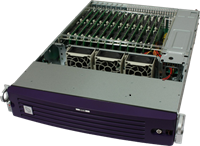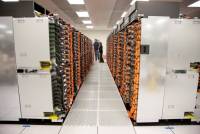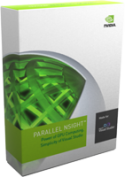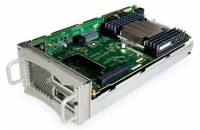WELCOME TO SCALABILITI
We're a UK Collective, doing our bit to help increase that distribution, by bringing the future that already exists to a wider audience.
London Tech Jobs at Career 2.0
- An error occurred while fetching this feed: http://careers.stackoverflow.com/jobs/feed?searchTerm=&location=London&range=20&ajax=1
TAG CLOUD
Table of Contents
Hot Chips in Oil gets a Big Boost from Intel
 Mineral oil has been used in immersion cooling because it is not hazardous, transfers heat almost as well as water but doesn’t conduct an electric charge. Fluorinert, a dielectric coolant from 3M that was used in the Cray 2 and other supercomputers.
Mineral oil has been used in immersion cooling because it is not hazardous, transfers heat almost as well as water but doesn’t conduct an electric charge. Fluorinert, a dielectric coolant from 3M that was used in the Cray 2 and other supercomputers.
The Intel demonstration (show above) looks far less sophisticated than the design was introduced by UK firm Iceotope way back at SC09.
Now Intel are giving the process a big shot in the arm by demoing oil-filled boxes built by an Austin, Texas, Green Revolution.
Oil based cooling can support up to 100 kilowatts per 42U rack, far beyond current average heat loads of 4 to 8 watts a rack and high-density loads of 12 to 30 kilowatts per rack.
Iceotope figures show that their servers can reduce facility operating costs and carbon output. Data centres can save 20% of power consumption at the server level and make a saving of 97% of costs associated with cooling power, an overall reduction of over 50% for the typical data centre.
Southampton University build a Raspberry Pi Cluster
 While the media may be calling this a 'super computer'. The Pi Cluster built by Southampton University will not be breaking any benchmark records. It does however provide a valuable low cost model to develop clustered and parallel computing for students and engineers. It also demonstrates how low power Arm is eating into new markets including now the educational space.
While the media may be calling this a 'super computer'. The Pi Cluster built by Southampton University will not be breaking any benchmark records. It does however provide a valuable low cost model to develop clustered and parallel computing for students and engineers. It also demonstrates how low power Arm is eating into new markets including now the educational space.
The 64 node Pi cluster runs off a single 13 Amp mains socket using stock debian. The whole system cost under £2,500 (excluding switches). It has 1Tb of memory and 16Gb SD cards for each Raspberry Pi. The team was lead by Professor Cox
Their details for their implementation can be found on the University web page http://www.southampton.ac.uk/~sjc/raspberrypi/
Twitter Offers a Package Mgt Built for the Web
Twitter have offered a new tool called Bower to the world. It packages up JavaScript code along with images, CSS and everything that's needed for a feature to be useful stand-alone and easily integrated into other projects.
“Bower lets you easily install assets such as images, CSS and JavaScript, and manages dependencies for you,” Twitter explains on the project's GitHub page.
Components have become more than code, with (less)css, json static data and other resources that must be packaged and tracked.
Twitter is still under development however Bowler as allegedly been used internally for a while and Twitter is now open-sourcing it.
Twitter has become a major force in the open source world with internal tools, like Twitter's Bootstrap has become one of the leading javascript/css frameworks.
Uppsala University Demonstrates Terahertz Speeds with Spintronics
 Uppsala University in Sweden have demonstrated hints of how the next generation of computers can communicate at Terahertz Speeds.
Uppsala University in Sweden have demonstrated hints of how the next generation of computers can communicate at Terahertz Speeds.
Peter Oppeneer and the Uppsala researchers showed how spin information can be transmitted using spin currents at terahertz speeds and how spin currents can be generated and transferred from one nanoscale metal layer to another in less than a picosecond.
Using ultra-short light pulses to create spin currents that move astonishingly fast through the nanostructured layers and transfer the spin. The generated spin currents transport the spin magnetic moment in femtoseconds
“We succeeded to do so by using ultra-short x-ray flashes with a pulse length of just a few femtoseconds.” Spin magnetic moments were quantified using magnetic x-ray spectroscopy, which makes it possible to perceive the spin dynamic processes that up to now have been invisible.
The Uppsala researchers are at the cutting edge of spin theory for these “superdiffusive spin currents”, which have been found to be the cause of ultra-fast spin dynamics.
Video of Dell's Arm based Server
Dell are showing off a prototype ARM-based server platform. These servers as one would expect are high density (48 servers in 3U) and use 50 percent less power than comparable x86 devices.
While not currently not commercially available there is a developers platform designed to seed an ecosystem for ARM servers.
Dell are offering a “test-drive” for evaluation.
The Hungarian Hacker who Automated and Hacked the Market
Thomas Peterffy the Hungarian immigrant who practically invents the moden high speed automated trading. A draftsman turned option trader, he is responsible for a number of firsts. As an option trader he was one of the first to use mathemstics to trade option ranges. These were calculations were cumbersome printed tables at first in 3 ring binders. When he was banned from bringing binders they tables were stuffed into pockets of jackets he had to wear year round.
Java and Cuda - When Worlds Collide
 Java has been a dominate force in enterprise computing and CUDA is arguably the dominate force in scientific and financial computing on GPUs.
Java has been a dominate force in enterprise computing and CUDA is arguably the dominate force in scientific and financial computing on GPUs.
However after many stalled attempts the two worlds have been difficult to combine, perhaps until now.
Syracuse University has developed a Java compiler aimed at GPU computing. Phil Pratt-Szeliga, Jim Fawcett and Roy Welch, have published a paper that descibes their java to cuda compiler called Rootbeer.
192 Core Server that Consumes only 5 watts of power!!
 Boston Viridis have started to ship the create a rack mountable 2U server cluster that uses the ARM® based Calxeda EnergyCore™ SoCs (Server on Chip). This server comprising 192 processing cores leading the way towards energy efficient hyperscale computing.
Boston Viridis have started to ship the create a rack mountable 2U server cluster that uses the ARM® based Calxeda EnergyCore™ SoCs (Server on Chip). This server comprising 192 processing cores leading the way towards energy efficient hyperscale computing.
Utilising all 48 Calxeda EnergyCore™ SoCs, the whole package including fabric and management consumes less than 300W - this is achieved by each SoC device consuming just 0.5 to 5 watts of power (depending on load).
US Recaptures the Super Computing Lead
 The Livermore National Laboratory (LLNL ) put America in the lead with new installation called Sequoia. This pushes the IBM creation to the worlds fastest supercomputer in the world. It is clocking a 16.3 PFlops the Linpack benchmark.
The Livermore National Laboratory (LLNL ) put America in the lead with new installation called Sequoia. This pushes the IBM creation to the worlds fastest supercomputer in the world. It is clocking a 16.3 PFlops the Linpack benchmark.
IBM is installing almost 100,000 Blue Gene / Q processors - PowerPC officially called A2 - at 1.6 GHz. Each one features 16 processing cores and an additional core for control and I / O. An eighteenth core in the chip serves as a reserve.
In further good news of IBM they dominated the list HPC manufacturers clearly ahead of second place Hewlett Packard. The IBM systems provide nearly 50 percent of total computing output of the top 500 super computers.
HPC have built 138 systems (formerly 141) with just under 10 percent of total output, followed by Cray (27 systems, 8.9 percent), Bull and SGI. So far, Cray was not present in the Top50.
SGI releases new UX Supercomputer on Hawkins
Need for Speed on Android - Intel and Open Source Developers Boost Performance
Android is rapidly a power player and some would say the default OS in embedded, mobile and the tablet space. With the launch of Intel's powered Android phone we are starting to see the heat turned up as Intel brings their expertise to bear improving the platform and no-doubt criticising the non-Intel mobile processors. At the same time the Open source community are contributing real performance gains of 30 to 100%
Nvidia releases updated Nsight Eclipse-based IDE
 Things are a foot at the GPU Technical Conference. And one of those things aims to make developing on GPU via CUDA a better experience.
Things are a foot at the GPU Technical Conference. And one of those things aims to make developing on GPU via CUDA a better experience.
Nvidia today launched an updated version of their Nsight development suite. This wraps the CUDA development SDK with an Eclipse-based IDE, providing a graphical debugger, inspector and code completion.


